Five years ago, launching a decent streaming platform took millions. Now? A teenager with a laptop can build something that reaches millions. That shift…
‘SpeedLink Decus’ gaming mouse review: a budget extravaganza
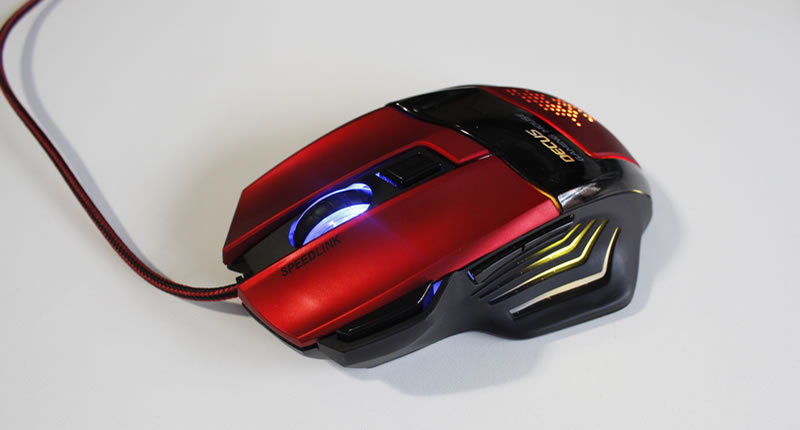
Gamers usually buy the best gaming mouse money can buy, or at least one they can afford. The device needs to at least be responsive, have mappable buttons, and adjustable DPI speeds. SpeedLink has been around for over a year now in the South African market, but has yet to make a full forced impact in it. With a budget mouse like the Decus, they may just have a chance.
The Decus is the high-end of SpeedLink’s gaming mouse spectrum. It is touted as a professional gaming mouse with ultimate ergonomics. Locally, the mouse is priced at a sweet R699. The features and ergonomics for a gaming peripheral at that price is impressive.
Ergonomics
I have pretty big hands, which means finding a mouse to fit them is a difficult task.
My current Logitech mouse — MX518 — is just a tad too small for me. The difference in size between my mouse and hands results in cramping for longer gaming sessions and office work.
The SpeedLink Decus is ergonomically designed and fits my right hand perfectly. My thumb, ring, and pinky fingers all have their own rests. The left and right mouse buttons have a slight curvature in which the respective fingers sit. The back of the mouse feels solid when your palm rests against it. Using the mouse feels natural.
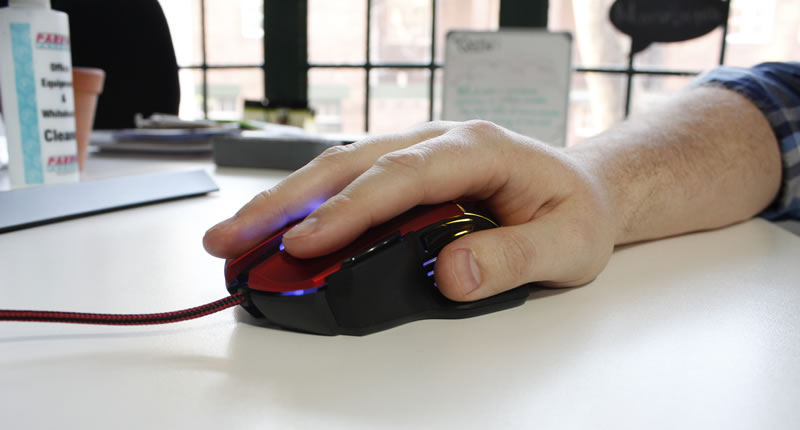
The Decus has a bit of weight to it but doesn’t come with any additional weights.
Design
As with most SpeedLink products, the company has opted for a red and black colour scheme. The majority of the peripheral is a shiny black plastic. Part of the back and both left and right click buttons are a rubbery red matte. Including the mouse wheel the device has seven customisable buttons. It may not be a Razer Naga Hex, but that’s still a lot of buttons.
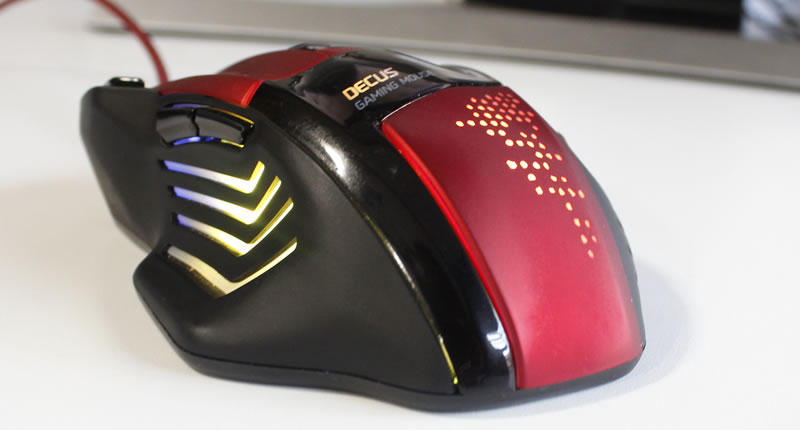
One of the biggest aesthetic draw features is the mouse’s lighting features. The device has a built-in colour LEDs, which change between six different colours. Each one can be selected in the device’s control panel and changed between Solid, Breathing (flashing), or Off. The colours can also be placed on a rotation, called Rainbow, which can be further set with solid or breathing.
The SpeedLink Decus’ wheel changes colour as well, but only depending on which profile is selected. Each of the five colours depends on which profile you’re currently using. This is a feature not stated in the control panel and really should be.
The mouse cord is protected by a black and red braid. The 1.8-meter USB is gold-plated and all connections are quite sturdy. It has an overall impressive design.
Software
The SpeedLink Decus Gaming Mouse software panel is relatively robust in terms or features and customisation. Even though it’s currently not fully compatible with Windows 10 you will need to install it in order to get the most out of your device.
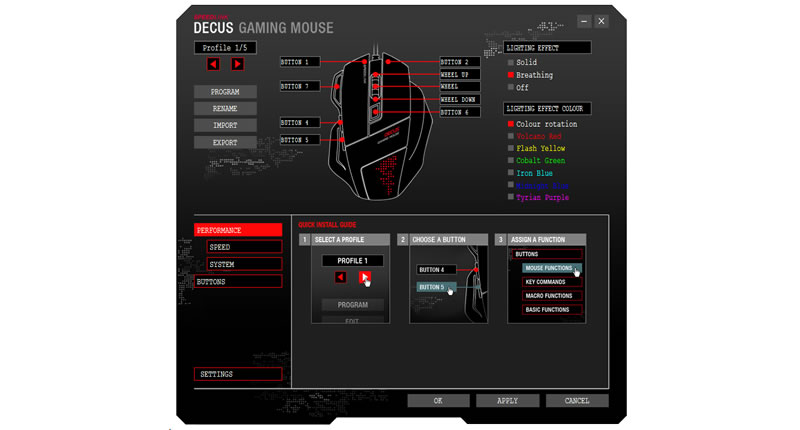
The software relies on the user choosing one of five profiles for the mouse; each of these will contain its own set of instructions. The mouse’s button commands and colour can be altered in here.
Under the Performance settings the mouse’s X/Y sensitivity, polling rate, rapid-fire speed, and DPI-settings can be altered. While most of the features are set to one type per profile, the DPI allows for four different speeds per profile.
The software was tested under Windows 8.1. Unfortunately it had a tendency to hang at times, and wouldn’t always save the selected settings. The issue didn’t happen often and shouldn’t affect the overall usage, though it can be annoying when settings things up. One hopes SpeedLink will fix these issues once they release a compatibility patch for Windows 10.
Gaming Performance and day to day use
My work requires a lot of window switching, mail checking, Microsofting, and net surfing. I’m also not a fan of keyboard tabbing, which means I use my mouse a lot. The Decus has been perfect for me and given a very comfortable experience during work.
I decided to give the mouse a whirl on two older games: F.E.A.R. and Command & Conquer 3. There’s no special reason — I just enjoy those games. I played C&C 3 without tweaking any settings and F.E.A.R. with remapped buttons.
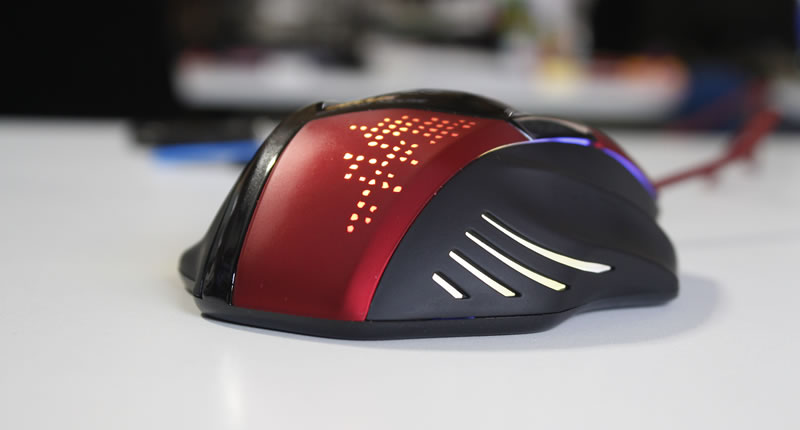
The mouse worked wonders in F.E.A.R. I was able to slow down time and reload without using my left hand. These mappings may not sound exciting, but it relieved a lot of pressure from your left hand.
C&C3 worked just as well. Playing with an uncompromised mouse proved to be just as useful as a customised one and the game was entirely comfortable.
Now if only the mouse had a built in speaker so I could revel in the cries of defeated NOD soldiers at my hand — get it?
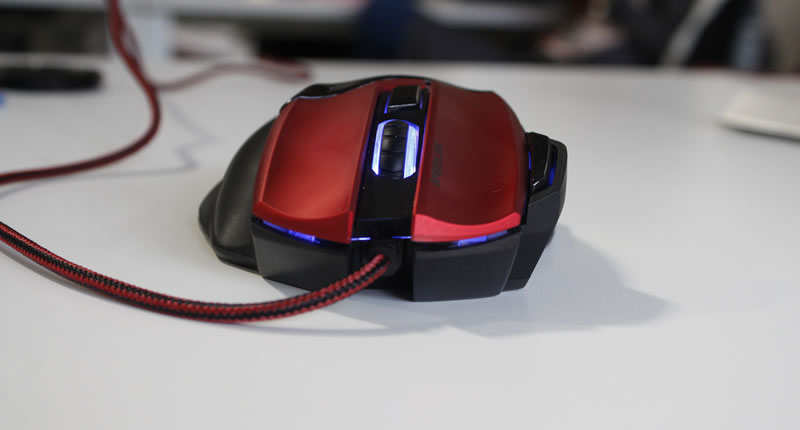
Verdict: The SpeedLink Decus loses points for the software, but overall I’m very happy with the physical unit and for the price is packs a lot of punch. This will be my next gaming purchase.
Score: 8/10
Our SpeedLink Decus review unit was distributed by Syntech.
Edit: Elaboration of software faults.

